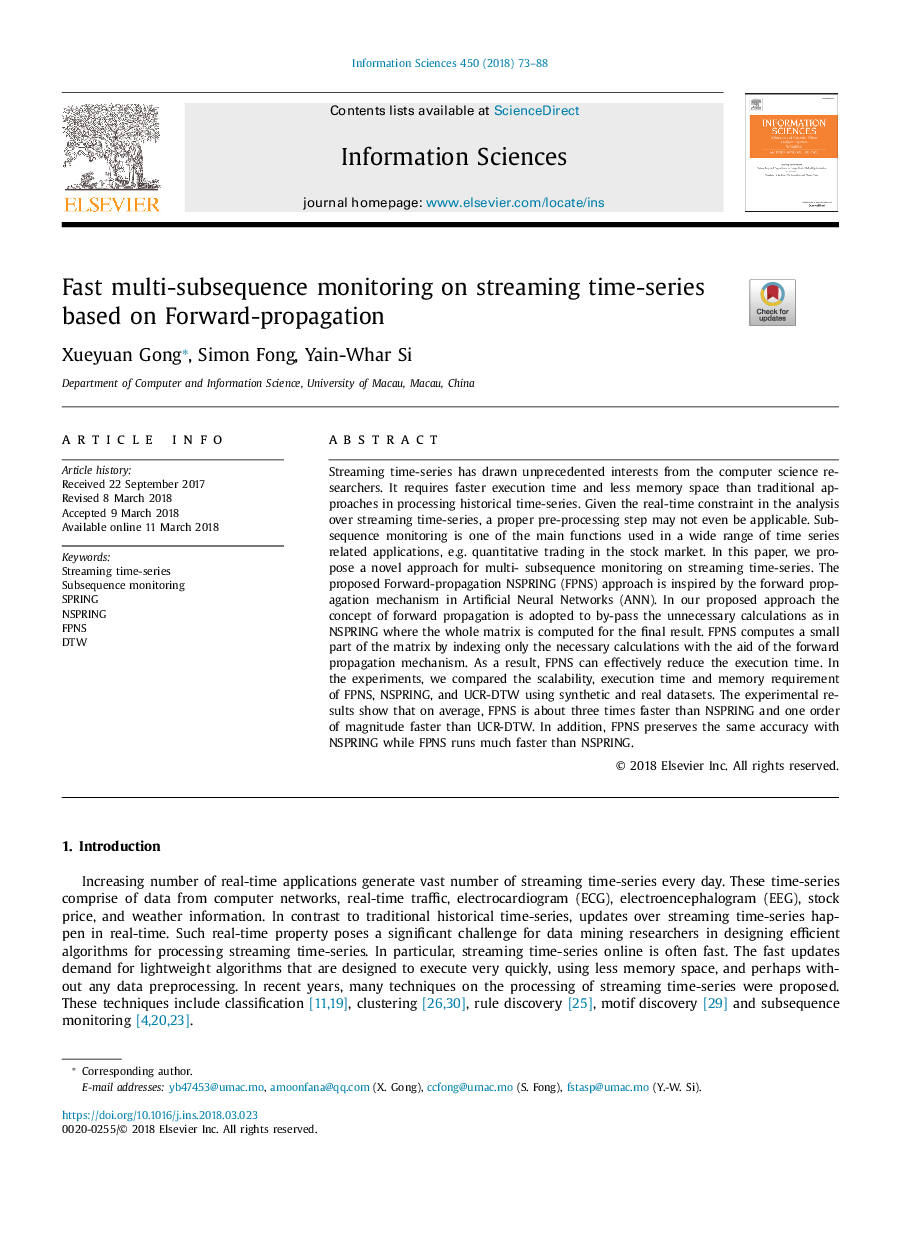| Article ID | Journal | Published Year | Pages | File Type |
|---|---|---|---|---|
| 6856458 | Information Sciences | 2018 | 16 Pages |
Abstract
Streaming time-series has drawn unprecedented interests from the computer science researchers. It requires faster execution time and less memory space than traditional approaches in processing historical time-series. Given the real-time constraint in the analysis over streaming time-series, a proper pre-processing step may not even be applicable. Subsequence monitoring is one of the main functions used in a wide range of time series related applications, e.g. quantitative trading in the stock market. In this paper, we propose a novel approach for multi- subsequence monitoring on streaming time-series. The proposed Forward-propagation NSPRING (FPNS) approach is inspired by the forward propagation mechanism in Artificial Neural Networks (ANN). In our proposed approach the concept of forward propagation is adopted to by-pass the unnecessary calculations as in NSPRING where the whole matrix is computed for the final result. FPNS computes a small part of the matrix by indexing only the necessary calculations with the aid of the forward propagation mechanism. As a result, FPNS can effectively reduce the execution time. In the experiments, we compared the scalability, execution time and memory requirement of FPNS, NSPRING, and UCR-DTW using synthetic and real datasets. The experimental results show that on average, FPNS is about three times faster than NSPRING and one order of magnitude faster than UCR-DTW. In addition, FPNS preserves the same accuracy with NSPRING while FPNS runs much faster than NSPRING.
Related Topics
Physical Sciences and Engineering
Computer Science
Artificial Intelligence
Authors
Xueyuan Gong, Simon Fong, Yain-Whar Si,
